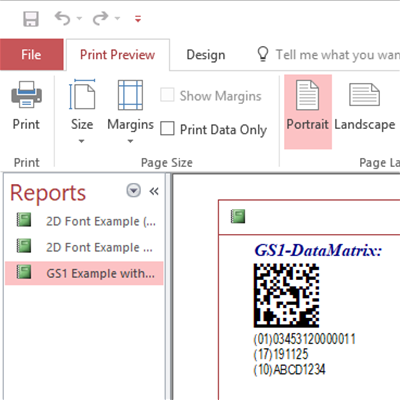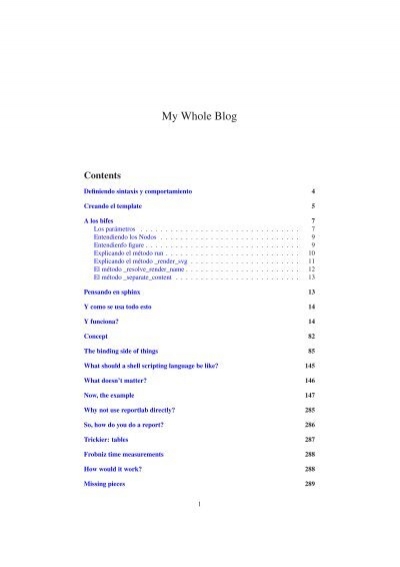Source code:Lib/base64.py
BaseColumns; CalendarContract.AttendeesColumns; CalendarContract.CalendarAlertsColumns; CalendarContract.CalendarCacheColumns; CalendarContract.CalendarColumns. Unicode Converter - Free online Encode/Decode String Characters. ConvertCodes, the free online Unicode converter website in real-time by javascript. Support for all Unicode type such as UTF-8, UTF-16, UTF-32, Base64, URL and Decimal encoding. We can convert across among these encoding whatever you need. This document provides a complete C# source code for encoding Data Matrix barcode images in C# class using C# Barcode generation.net SDK. OnBarcode C# Barcode Generator is designed to generate, create Data Matrix and other linear & 2d barcodes in Microsoft Word.

This module provides functions for encoding binary data to printableASCII characters and decoding such encodings back to binary data.It provides encoding and decoding functions for the encodings specified inRFC 3548, which defines the Base16, Base32, and Base64 algorithms,and for the de-facto standard Ascii85 and Base85 encodings.
The RFC 3548 encodings are suitable for encoding binary data so that it cansafely sent by email, used as parts of URLs, or included as part of an HTTPPOST request. The encoding algorithm is not the same as theuuencode program.
There are two interfaces provided by this module. The modern interfacesupports encoding bytes-like objects to ASCIIbytes, and decoding bytes-like objects orstrings containing ASCII to bytes. Both base-64 alphabetsdefined in RFC 3548 (normal, and URL- and filesystem-safe) are supported.
The legacy interface does not support decoding from strings, but it doesprovide functions for encoding and decoding to and from file objects. It only supports the Base64 standard alphabet, and it addsnewlines every 76 characters as per RFC 2045. Note that if you are lookingfor RFC 2045 support you probably want to be looking at the emailpackage instead.
Changed in version 3.3: ASCII-only Unicode strings are now accepted by the decoding functions ofthe modern interface.
Changed in version 3.4: Any bytes-like objects are now accepted by allencoding and decoding functions in this module. Ascii85/Base85 support added.
The modern interface provides:
base64.b64encode(s, altchars=None)¶Encode the bytes-like objects using Base64 and return the encodedbytes.
Optional altchars must be a bytes-like object of at leastlength 2 (additional characters are ignored) which specifies an alternativealphabet for the + and / characters. This allows an application to e.g.generate URL or filesystem safe Base64 strings. The default is None, forwhich the standard Base64 alphabet is used.
base64.b64decode(s, altchars=None, validate=False)¶Decode the Base64 encoded bytes-like object or ASCII strings and return the decoded bytes.
Optional altchars must be a bytes-like object or ASCII string ofat least length 2 (additional characters are ignored) which specifies thealternative alphabet used instead of the + and / characters.
A binascii.Error exception is raisedif s is incorrectly padded.
If validate is False (the default), characters that are neitherin the normal base-64 alphabet nor the alternative alphabet arediscarded prior to the padding check. If validate is True,these non-alphabet characters in the input result in abinascii.Error.
base64.standard_b64encode(s)¶Encode bytes-like objects using the standard Base64 alphabetand return the encoded bytes.
base64.standard_b64decode(s)¶Decode bytes-like object or ASCII string s using the standardBase64 alphabet and return the decoded bytes.

base64.urlsafe_b64encode(s)¶Encode bytes-like objects using theURL- and filesystem-safe alphabet, whichsubstitutes - instead of + and _ instead of / in thestandard Base64 alphabet, and return the encoded bytes. The resultcan still contain =.
base64.urlsafe_b64decode(s)¶Decode bytes-like object or ASCII string susing the URL- and filesystem-safealphabet, which substitutes - instead of + and _ instead of/ in the standard Base64 alphabet, and return the decodedbytes.
base64.b32encode(s)¶Encode the bytes-like objects using Base32 and return theencoded bytes.
base64.b32decode(s, casefold=False, map01=None)¶Decode the Base32 encoded bytes-like object or ASCII string s andreturn the decoded bytes.
Optional casefold is a flag specifyingwhether a lowercase alphabet is acceptable as input. For security purposes,the default is False.
RFC 3548 allows for optional mapping of the digit 0 (zero) to the letter O(oh), and for optional mapping of the digit 1 (one) to either the letter I (eye)or letter L (el). The optional argument map01 when not None, specifieswhich letter the digit 1 should be mapped to (when map01 is not None, thedigit 0 is always mapped to the letter O). For security purposes the default isNone, so that 0 and 1 are not allowed in the input.

A binascii.Error is raised if s isincorrectly padded or if there are non-alphabet characters present in theinput.
base64.b16encode(s)¶Encode the bytes-like objects using Base16 and return theencoded bytes.
base64.b16decode(s, casefold=False)¶Decode the Base16 encoded bytes-like object or ASCII string s andreturn the decoded bytes.
Optional casefold is a flag specifying whether alowercase alphabet is acceptable as input. For security purposes, the defaultis False.

A binascii.Error is raised if s isincorrectly padded or if there are non-alphabet characters present in theinput.
base64.a85encode(b, *, foldspaces=False, wrapcol=0, pad=False, adobe=False)¶Encode the bytes-like objectb using Ascii85 and return theencoded bytes.
foldspaces is an optional flag that uses the special short sequence ‘y’instead of 4 consecutive spaces (ASCII 0x20) as supported by ‘btoa’. Thisfeature is not supported by the “standard” Ascii85 encoding.
wrapcol controls whether the output should have newline (b'n')characters added to it. If this is non-zero, each output line will beat most this many characters long.
pad controls whether the input is padded to a multiple of 4before encoding. Note that the btoa implementation always pads.
adobe controls whether the encoded byte sequence is framed with <~and ~>, which is used by the Adobe implementation.
base64.a85decode(b, *, foldspaces=False, adobe=False, ignorechars=b' tnrv')¶Decode the Ascii85 encoded bytes-like object or ASCII string b andreturn the decoded bytes.
foldspaces is a flag that specifies whether the ‘y’ short sequenceshould be accepted as shorthand for 4 consecutive spaces (ASCII 0x20).This feature is not supported by the “standard” Ascii85 encoding.
adobe controls whether the input sequence is in Adobe Ascii85 format(i.e. is framed with <~ and ~>).
ignorechars should be a bytes-like object or ASCII stringcontaining characters to ignorefrom the input. This should only contain whitespace characters, and bydefault contains all whitespace characters in ASCII.
New in version 3.4.
base64.b85encode(b, pad=False)¶Encode the bytes-like objectb using base85 (as used in e.g.git-style binary diffs) and return the encoded bytes.
If pad is true, the input is padded with b'0' so its length is amultiple of 4 bytes before encoding.
base64.b85decode(b)¶Decode the base85-encoded bytes-like object or ASCII string b andreturn the decoded bytes. Padding is implicitly removed, ifnecessary.
Base256 Encoding Android Video
New in version 3.4.
The legacy interface:
base64.decode(input, output)¶Decode the contents of the binary input file and write the resulting binarydata to the output file. input and output must be file objects. input will be read until input.readline() returns anempty bytes object.
base64.decodebytes(s)¶Decode the bytes-like objects, which must contain one or morelines of base64 encoded data, and return the decoded bytes.
base64.encode(input, output)¶Encode the contents of the binary input file and write the resulting base64encoded data to the output file. input and output must be fileobjects. input will be read until input.read() returnsan empty bytes object. encode() inserts a newline character (b'n')after every 76 bytes of the output, as well as ensuring that the outputalways ends with a newline, as per RFC 2045 (MIME).
base64.encodebytes(s)¶Encode the bytes-like objects, which can contain arbitrary binarydata, and return bytes containing the base64-encoded data, with newlines(b'n') inserted after every 76 bytes of output, and ensuring thatthere is a trailing newline, as per RFC 2045 (MIME).
New in version 3.1.
An example usage of the module:
See also
binasciiSupport module containing ASCII-to-binary and binary-to-ASCII conversions.
Section 5.2, “Base64 Content-Transfer-Encoding,” provides the definition of thebase64 encoding.
barcode fonts to encode data strings and produce readable barcodes on Android devices.- Source Code Examples
Android Barcode Font Implementation & Compatibility

| Android Barcode Symbology Compatibility | |
| Linear Barcodes | Code 39, Extended Code 39, Code 128 (with character sets Auto, A, B & C), GS1-128 (aka: UCC/EAN-128), USS-128, NW7, Interleaved 2 of 5, Codabar, UPC-A, UPC-E, MSI, EAN-8, EAN-13, Code 11, Code 93, ITF, Bearer Bars, PLANET, USPS OneCode 4CB, Intelligent Mail and Postnet. |
| 2D PDF417 | PDF417 with text and base256 (byte) encoding. AIM Specification USS PDF417. |
| 2D Data Matrix | Data Matrix with ECC200 error correction. Encoding modes of Text, ASCII, C40 and Base256 (byte) encoding are supported. AIM Specification ISS Data Matrix. |
| 2D MaxiCode | MaxiCode with support for modes 2-6. AIM Specification ISS MaxiCode. |
| 2D Aztec | Aztec with support for appending messages across multiple symbols, and scanner initialization. |
| 2D QR-Code | QR-Code with support for Byte, Numeric, and Alpha-numeric encoding modes, and automatic Version selection. |
| GS1 DataBar (RSS) | GS1 DataBar Truncated, Stacked, Stacked Omni-directional, Limited, Expanded, Expanded Stacked Omni-directional. |
Installing Android Barcode Fonts
Base256 Encoding Android Download
- The following steps assume that Eclipse is being used and that the Android SDK and plug-in have already been installed and configured.
- Download and unzip the Java Font Encoder into a directory on the development computer.
(Java encoders for 2D barcode fonts are included in their respective font packages.) - In Eclipse, open the properties of the project.
- Select the Java Build Path option.
- Import the encoder.
- When importing a class file, such as in the PDF417 Java font encoder, click the Add External Class Folder... option, then navigate to the parent folder containing the package.
- When importing a jar file, click the Add External JARs button. Navigate to the jar file and click OK.
- Create a Fonts folder in the assets directory of your android project.
- Add the true type barcode font files that will be used to create the barcode such as the IDAutomationC128.ttf. These fonts will be applied programmatically to a TextView using the Typeface class, see source code examples.
Download the sample android project for a working example.
Download Now
Android Barcode Source Code Examples
Once installed, several different method parameters and properties may be used from the java font encoder to encode the input.
Using the Java Barcode Generator for Android
The method to use from the encoder will depend on the barcode type that will be generated. Here are some implementation examples of using the java font encoder for android with a specified barcode font.
Applying the Barcode Font to a Text View
Code 128 Implementation Example
QR Code Implementation Example
PDF417 Implementation Example
Method to Remove Extra Carriage Returns for 2D Barcode Implementations
Code 128 Barcode FAQ | QR Code Barcode FAQ | PDF417 Barcode FAQ
Related Products & Information
The following product and information links relate to this product and may be of interest:
Android Barcode Integration Support
Free product support is available by reviewing the font problems and solutions information that IDAutomation has documented and by searching resolved public forum threads.
Pre-sales and existing customer support is available by contacting IDAutomation, and additional technical support may be attained with the purchase of the one year Priority Support and Upgrade Subscription.